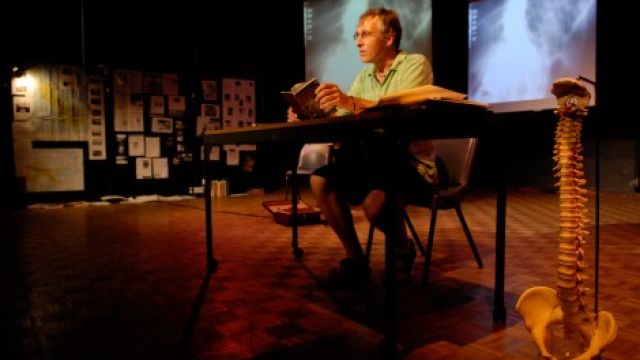The Bougainville Photoplay Project.
In the award-winning 1999 documentary Facing The Demons, the family and friends of murder victim Michael Marslew meet face-to-face in a ‘restorative justice conference’ between two of the offenders responsible for Michael’s death. Produced by the Dee Cameron Company, the documentary was broadcast to widespread critical and public acclaim – going on to win the Logie for ‘Best Documentary’ and the Award for Best Television at the United Nations’ annual Media Peace Awards.
‘Restorative justice’ and ‘restorative practice’ are both more- and less-complex versions of the concept of mediation, fuelled by society’s need (and preference) for understanding, forgiveness, harmony and mutual respect and cooperation as opposed to the ‘criminal justice system’ that focuses exclusively on argument, punishment, incarceration and – hopefully – rehabilitation.
In this beautifully directed and performed lecture, Dr Dwyer explores the essence of restorative justice through his engrossing, intimate reminiscence of his father Allan’s work (and his young family’s experience of it) as a renowned orthopedic surgeon in Bougainville during the 1960s. Gradually, the performance shifts its focus to the post-colonial relationships between the people of Bougainville, the Australian Government and BCL (a subsidiary of the mining giant Rio Tinto) whose enormous open-cut copper mine resulted in social and environmental armagaeddon.
Through the use of archival video (including the mining company’s shocking propaganda film My Valley is Changing), slides of a young family’s visits to Bougainville, photographs, projections and a collection of the “miracle doctor’s” tools, the ghost of Dr Allan Dwyer pervades the performance, which makes its capitulation into agitprop a little discomforting. The juxtaposition between the pure-hearted goodness of one (the good doctor) with the capitalistic, imperialistic and self-serving actions of the other (the evil mining corporation) fails to do the argument complete justice. There is no illumination with regards to what the advantages of this mine might have been (if in fact there even were any), and yet without it, there is a hint of political opportunism that for inquiring minds, decreases the overall effectiveness of the piece. The resulting simplistic strain of revenging and avenging the horrors of destructive industry in the bountiful region also fails to meet the complex psychological imperatives within the concept of ‘restorative practice’ – abandoning us, instead, approximately halfway up the great Silvan Tomkins’s ‘Nine Affects’ scale of the human expression of emotion (disgust, distress and shame).
Interestingly, apart from the stunning recreations of his father’s surgical procedures, Dr Dwyer really ups the stakes with a stunning performance of his dangerous nighttime trek to a local forgiveness ceremony. With the use of only a tiny flashlight and a complete command of Bougainville’s lingua franca – Tok Pisin – we experience another level of engagement entirely, both with and between the performer and his story. It becomes something like an exorcism – and is at once thrilling, dangerous and exciting. It is also the only point at which the performance embodies the fundamental cultural differences and similarities that define the accepted endpoint of restorative practice in action – which is euphoria, discovered through the act of understanding, acceptance and forgiveness, not the conceptualisation and analysis of it.
Dr Dwyer’s quiet and disarming final statement is that he plans to return to Bougainville with his two sons sometime in the not too distant future. I, for one, wish him well. What it will ultimately take for our nation to follow, sadly, remains anyone’s guess.
Geoffrey Williams
Subscribe to our E-Newsletter, buy our latest print edition or find a Performing Arts book at Book Nook.

